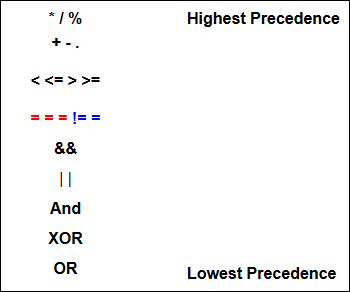नयी दिल्ली: प्रधानमंत्री नरेंद्र मोदी ने अपने मंत्रिमंडल में 19 नए मंत्रियों को शामिल करने के बाद विभागों में फेरबदल करके सबको चौंका दिया है. स्मृति ईरानी की जगह पर प्रकाश जावड़ेकर को मानव संसाधन विकास मंत्रालय का जिम्मा सौंपा गया है जबकि स्मृति ईरानी अब कपड़ा मंत्रालय का कार्यभार संभालेंगी. केंद्र की नरेंद्र मोदी सरकार के मंत्रिपरिषद विस्तार और फेरबदल के तहत मंगलवार रात स्मृति ईरानी को मानव संसाधन विकास जैसे अहम मंत्रालय से हटाकर कम अहमियत वाले कपडा मंत्रालय की जिम्मेदारी सौंप दी गई.
वहीं केंद्रीय वित्त मंत्री अरुण जेटली ने सूचना एवं प्रसारण मंत्रालय का अतिरिक्त प्रभार छोड दिया है. हैदराबाद में दलित छात्र रोहित वेमुला की खुदकुशी और जेएनयू विवाद जैसे वाकयों की वजह से ईरानी का लगभग दो साल का कार्यकाल विवादों में रहा है. बहरहाल, ईरानी को महत्वहीन समझा जाने वाला कपडा मंत्रालय दिए जाने से यह कयास भी लगाए जा रहे हैं कि कहीं ऐसा इसलिए तो नहीं किया गया कि वह 2017 में होने वाले उत्तर प्रदेश विधानसभा चुनाव में भाजपा के प्रचार का चेहरा बनाए जाने की स्थिति में वह प्रचार के लिए ज्यादा वक्त निकाल सकें. प्रधानमंत्री ने आज अपने मंत्रिपरिषद के विस्तार में 19 नए मंत्रियों को शामिल किया जिनमें भाजपा नेता एस एस आहलूवालिया, एम जे अकबर और विजय गोयल जैसे जानेमाने नाम शामिल हैं.
पर्यावरण राज्य मंत्री (स्वतंत्र प्रभार) प्रकाश जावडेकर को सरकार के इस दूसरे विस्तार में तरक्की देकर कैबिनेट रैंक के मंत्री के तौर पर शपथ दिलाई गई. अकबर को विदेश राज्य मंत्री बनाया गया है. विदेश मंत्रालय में वी के सिंह एक अन्य राज्य मंत्री हैं. शहरी विकास मंत्री एम वैंकैया नायडू को सूचना एवं प्रसारण मंत्रालय का अतिरिक्त प्रभार दिया गया है. हालांकि, उनसे संसदीय कार्य मंत्रालय की जिम्मेदारी वापस ले ली गई है. यह जिम्मेदारी अब रसायन एवं उवर्रक मंत्री अनंत कुमार संभालेंगे. मंत्रिपरिषद में हुए इस फेरबदल में डी वी सदानंद गौडा से कानून एवं न्याय मंत्रालय वापस ले लिया गया. कानून एवं न्याय मंत्रालय का अतिरिक्त प्रभार अब रविशंकर प्रसाद संभालेंगे. गौडा को सांख्यिकी एवं कार्यक्रम क्रियान्वयन मंत्रालय आवंटित किया गया है. जयंत सिन्हा को वित्त राज्य मंत्री के पद से हटाकर नागरिक उड्डयन राज्य मंत्री बनाया गया है. इस पद पर अब तक महेश शर्मा थे. शर्मा अब सिर्फ संस्कृति एवं पर्यटन मंत्रालय की जिम्मेदारी संभालेंगे.
मंत्रिपरिषद में हुए इस फेरबदल में पांच राज्य मंत्रियों को बाहर का रास्ता दिखाया गया. पांच मंत्रियों को हटाने और विस्तार के बाद अब मोदी मंत्रिपरिषद में 78 मंत्री हो गए हैं. कैबिनेट मंत्रियों में चौधरी वीरेंद्र सिंह को ग्रामीण विकास, पंचायती राज और पेयजल एवं स्वच्छता मंत्रालय से हटाकर इस्पात मंत्रालय की जिम्मेदारी दी गई है. ग्रामीण विकास, पंचायती राज और पेयजल एवं स्वच्छता मंत्रालय की जिम्मेदारी अब नरेंद्र सिंह तोमर को दी गई है. वह पहले खदान एवं इस्पात मंत्री थे. अन्य कैबिनेट मंत्रियों और राज्य मंत्रियों के प्रभार में कोई बदलाव नहीं किया गया. बिजली, कोयला एवं अक्षय उर्जा राज्य मंत्री (स्वतंत्र प्रभार) को खदान मंत्रालय का अतिरिक्त प्रभार दिया गया है.
रेल राज्य मंत्री मनोज सिन्हा को संचार राज्य मंत्री (स्वतंत्र प्रभार) की जिम्मेदारी दी गई है जबकि संतोष कुमार गंगवार को जयंत सिन्हा की जगह वित्त मंत्रालय में भेजा गया है. इससे पहले, गंगवार कपडा राज्य मंत्री (स्वतंत्र प्रभार) थे. अर्जुन राम मेघवाल वित्त मंत्रालय में दूसरे राज्य मंत्री होंगे. पर्यावरण राज्य मंत्री (स्वतंत्र प्रभार) की जिम्मेदारी संभाल रहे जावडेकर एकमात्र ऐसे मंत्री रहे जिन्हें कैबिनेट रैंक में तरक्की दी गई, जबकि सभी नए मंत्रियों को राज्य मंत्री के तौर पर शपथ दिलाई गई. इससे पहले, ऐसी अटकलें थीं कि गोयल और वाणिज्य राज्य मंत्री (स्वतंत्र प्रभार) निर्मला सीतारमण को कैबिनेट रैंक में तरक्की दी जाएगी. नए मंत्रियों में विजय गोयल को युवा मामलों एवं खेल मंत्रालय में राज्य मंत्री :स्वतंत्र प्रभार: बनाया गया है. असम के मुख्यमंत्री बनने से पहले इस पद पर सर्वानंद सोनोवाल काबिज थे. अनिल माधव दवे को पर्यावरण मंत्रालय में राज्य मंत्री (स्वतंत्र प्रभार) बनाया गया है. भाजपा की सहयोगी पार्टी अपना दल की नेता अनुप्रिया पटेल को स्वास्थ्य एवं परिवार कल्याण मंत्रालय में राज्य मंत्री (स्वतंत्र प्रभार) बनाया गया है जबकि डॉ. एस आर भामरे को रक्षा राज्य मंत्री बनाया गया है.
आहलूवालिया को कृषि एवं किसान कल्याण मंत्रालय और संसदीय कार्य मंत्रालय में राज्य मंत्री बनाया गया है. अजय टम्टा (उत्तराखंड), अर्जुन राम मेघवाल (राजस्थान), कृष्णा राज (उत्तर प्रदेश), रामदास अठावले (महाराष्ट्र), रमेश सी जीगाजिनगी (कर्नाटक) उन दलित मंत्रियों में शामिल हैं जिन्हें राष्ट्रपति भवन में आज आयोजित एक कार्यक्रम में राष्ट्रपति प्रणब मुखर्जी ने पद एवं गोपनीयता की शपथ दिलाई. शपथ ग्रहण कार्यक्रम में उपराष्ट्रपति हामिद अंसारी, प्रधानमंत्री मोदी और उनके मंत्रिपरिषद के सहकर्मी, भाजपा अध्यक्ष अमित शाह और सहयोगी पार्टियों के नेता मौजूद थे. कांग्रेस का कोई भी नेता इस मौके पर मौजूद नहीं था. जिन अन्य चेहरों को मंत्री बनाया गया उनमें पी पी चौधरी, सी आर चौधरी (राजस्थान), ए एम दवे, फग्गन सिंह कुलस्ते (मध्य प्रदेश), महेंद्र नाथ पांडेय उत्तर प्रदेश) पुरुषोत्तम रुपाला, जे भाभोर और मनसुखभाई मंडाविया (गुजरात), राजेन गोहाईं (असम) और एस आर भामरे (महाराष्ट्र) शामिल हैं. राष्ट्रपति भवन की ओर से जारी एक विज्ञप्ति में कहा गया कि राष्ट्रपति ने सांवर लाल जाट (जल संसाधन), मोहनभाई कल्याणजीभाई कुंदरिया (कृषि), निहाल चंद (पंचायती राज), मनसुखभाई धानजीभाई वासव (जनजातीय मामले) और राम शंकर कठेरिया (एचआरडी) का इस्तीफा स्वीकार कर लिया है.





